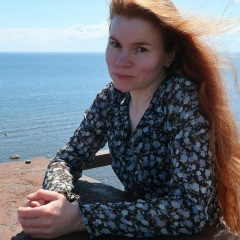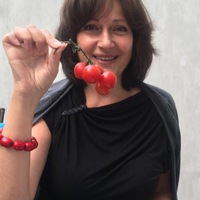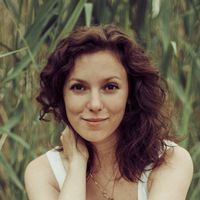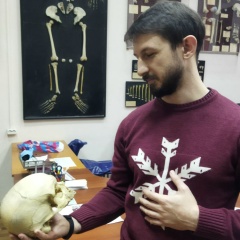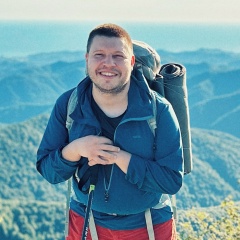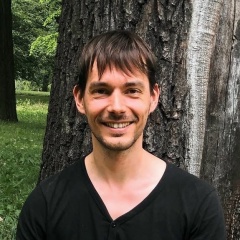Стокгольм — озеро Ваттерн — Гётеборг — Мальмё: 12 дней, 1000 км.
Вся страна опутана веломаршрутами, которые проходят либо по не очень оживлённым сельским дорогам, либо просто сквозь леса и поля. В каждом регионе есть свои локальные маршруты, есть и несколько общенациональных. Ещё одна особенность Швеции (как скандинавской страны): наличие огромного количества укрытий от дождя и ветра (по-шведски это называется vindskydd, это финский аналог laavu) — они абсолютно бесплатные, как правило, чистые и ухоженные, иногда даже с дровами. Последнее, правда, было не очень актуально: из-за аномально сухого лета разводить костры в лесу было повсеместно запрещено.
Когда планировал маршрут, узнал о существовании Гёта-канала: он проходит через всю Швецию с запада на восток, соединяя Северное море с Ботническим заливом. Кроме того, вдоль него идёт велодорога, и на расстоянии трёх метров от велосипеда всё время проходят разные яхты.
В какой-то момент Гёта-канал соединяется с озером Ваттерн — это огромное по европейским меркам озеро, и, вроде бы, самое глубокое в Швеции. От него я поехал в сторону Гётеборга и дальше вдоль западного побережья в Мальмё. Тут проходит популярный веломаршрут Eurovelo 7, и поэтому встречается много немецких и датских велотуристов — все как один с полным набором разноцветных сумок Ortlieb. Здесь уже попроще рельеф, поэтому многие едут даже и с детьми.
Трек: https://drive.google.com/open?id=1fJ69hiHf60Dmue1tQ2nyUa45Syu5l7Mw&usp=sharing
Теперь несколько слов о велосипеде. Давно думал о стальной раме, со всеми вытекающими отсюда подробностями. Зимой нашёл ребят из [club30573171|ENKO cycles], и сразу стало понятно, что они могут сделать всё, что нужно. Февраль и март прошли в обсуждении геометрии, деталей, основных узлов, ещё три месяца ушло на ожидание запчастей, работу, сборку и покраску — и в конце июня стальной монстеркросс на 700х колёсах был готов. Подробности см. https://vk.com/wall-30573171_2768 и https://vk.com/wall-30573171_2789.
Вся страна опутана веломаршрутами, которые проходят либо по не очень оживлённым сельским дорогам, либо просто сквозь леса и поля. В каждом регионе есть свои локальные маршруты, есть и несколько общенациональных. Ещё одна особенность Швеции (как скандинавской страны): наличие огромного количества укрытий от дождя и ветра (по-шведски это называется vindskydd, это финский аналог laavu) — они абсолютно бесплатные, как правило, чистые и ухоженные, иногда даже с дровами. Последнее, правда, было не очень актуально: из-за аномально сухого лета разводить костры в лесу было повсеместно запрещено.
Когда планировал маршрут, узнал о существовании Гёта-канала: он проходит через всю Швецию с запада на восток, соединяя Северное море с Ботническим заливом. Кроме того, вдоль него идёт велодорога, и на расстоянии трёх метров от велосипеда всё время проходят разные яхты.
В какой-то момент Гёта-канал соединяется с озером Ваттерн — это огромное по европейским меркам озеро, и, вроде бы, самое глубокое в Швеции. От него я поехал в сторону Гётеборга и дальше вдоль западного побережья в Мальмё. Тут проходит популярный веломаршрут Eurovelo 7, и поэтому встречается много немецких и датских велотуристов — все как один с полным набором разноцветных сумок Ortlieb. Здесь уже попроще рельеф, поэтому многие едут даже и с детьми.
Трек: https://drive.google.com/open?id=1fJ69hiHf60Dmue1tQ2nyUa45Syu5l7Mw&usp=sharing
Теперь несколько слов о велосипеде. Давно думал о стальной раме, со всеми вытекающими отсюда подробностями. Зимой нашёл ребят из [club30573171|ENKO cycles], и сразу стало понятно, что они могут сделать всё, что нужно. Февраль и март прошли в обсуждении геометрии, деталей, основных узлов, ещё три месяца ушло на ожидание запчастей, работу, сборку и покраску — и в конце июня стальной монстеркросс на 700х колёсах был готов. Подробности см. https://vk.com/wall-30573171_2768 и https://vk.com/wall-30573171_2789.
Stockholm - Lake Vatter - Gothenburg - Malmo: 12 days, 1000 km.
The whole country is entangled in cycling routes that pass either on not very busy rural roads, or simply through forests and fields. Each region has its own local routes, there are several nationwide. Another feature of Sweden (as a Scandinavian country): the presence of a huge number of shelters from rain and wind (in Swedish it is called vindskydd, this is the Finnish analogue of laavu) - they are absolutely free, as a rule, clean and well-groomed, sometimes even with firewood. The latter, however, was not very relevant: because of the abnormally dry summer, making fires in the forest was universally prohibited.
When I planned the route, I learned about the existence of the Geta Canal: it passes through all of Sweden from west to east, connecting the North Sea with the Gulf of Bothnia. In addition, there is a bicycle road along it, and at a distance of three meters from the bicycle, different yachts go all the time.
At some point, the Geta Canal connects to Lake Vatter - it is a huge lake by European standards, and, it seems, the deepest in Sweden. From him I drove towards Gothenburg and further along the west coast to Malmö. There is the popular Eurovelo 7 cycle route, and therefore there are many German and Danish cyclists - all as one with a full set of colorful Ortlieb bags. The terrain is already simpler here, so many people go even with children.
Track: https://drive.google.com/open?id=1fJ69hiHf60Dmue1tQ2nyUa45Syu5l7Mw&usp=sharing
Now a few words about the bike. I have long been thinking about a steel frame, with all the ensuing details. In winter I found the guys from [club30573171 | ENKO cycles], and immediately it became clear that they can do whatever they need. February and March took place in a discussion of geometry, parts, basic components, another three months it took to wait for spare parts, work, assembly and painting - and at the end of June a steel monstercross on 700 wheels was ready. See https://vk.com/wall-30573171_2768 and https://vk.com/wall-30573171_2789 for details.
The whole country is entangled in cycling routes that pass either on not very busy rural roads, or simply through forests and fields. Each region has its own local routes, there are several nationwide. Another feature of Sweden (as a Scandinavian country): the presence of a huge number of shelters from rain and wind (in Swedish it is called vindskydd, this is the Finnish analogue of laavu) - they are absolutely free, as a rule, clean and well-groomed, sometimes even with firewood. The latter, however, was not very relevant: because of the abnormally dry summer, making fires in the forest was universally prohibited.
When I planned the route, I learned about the existence of the Geta Canal: it passes through all of Sweden from west to east, connecting the North Sea with the Gulf of Bothnia. In addition, there is a bicycle road along it, and at a distance of three meters from the bicycle, different yachts go all the time.
At some point, the Geta Canal connects to Lake Vatter - it is a huge lake by European standards, and, it seems, the deepest in Sweden. From him I drove towards Gothenburg and further along the west coast to Malmö. There is the popular Eurovelo 7 cycle route, and therefore there are many German and Danish cyclists - all as one with a full set of colorful Ortlieb bags. The terrain is already simpler here, so many people go even with children.
Track: https://drive.google.com/open?id=1fJ69hiHf60Dmue1tQ2nyUa45Syu5l7Mw&usp=sharing
Now a few words about the bike. I have long been thinking about a steel frame, with all the ensuing details. In winter I found the guys from [club30573171 | ENKO cycles], and immediately it became clear that they can do whatever they need. February and March took place in a discussion of geometry, parts, basic components, another three months it took to wait for spare parts, work, assembly and painting - and at the end of June a steel monstercross on 700 wheels was ready. See https://vk.com/wall-30573171_2768 and https://vk.com/wall-30573171_2789 for details.










У записи 71 лайков,
1 репостов,
4071 просмотров.
1 репостов,
4071 просмотров.
Эту запись оставил(а) на своей стене Игорь Шендерович







